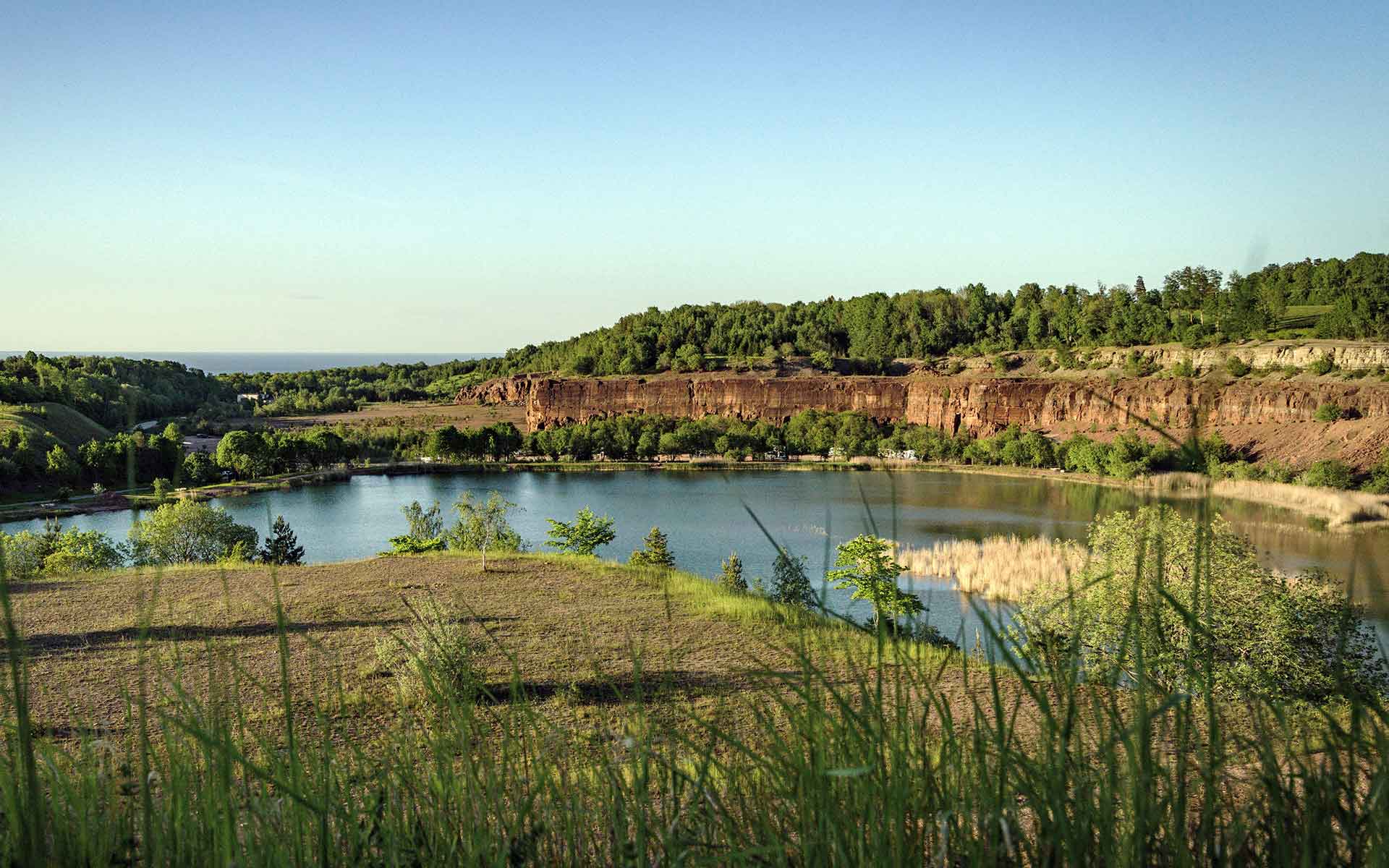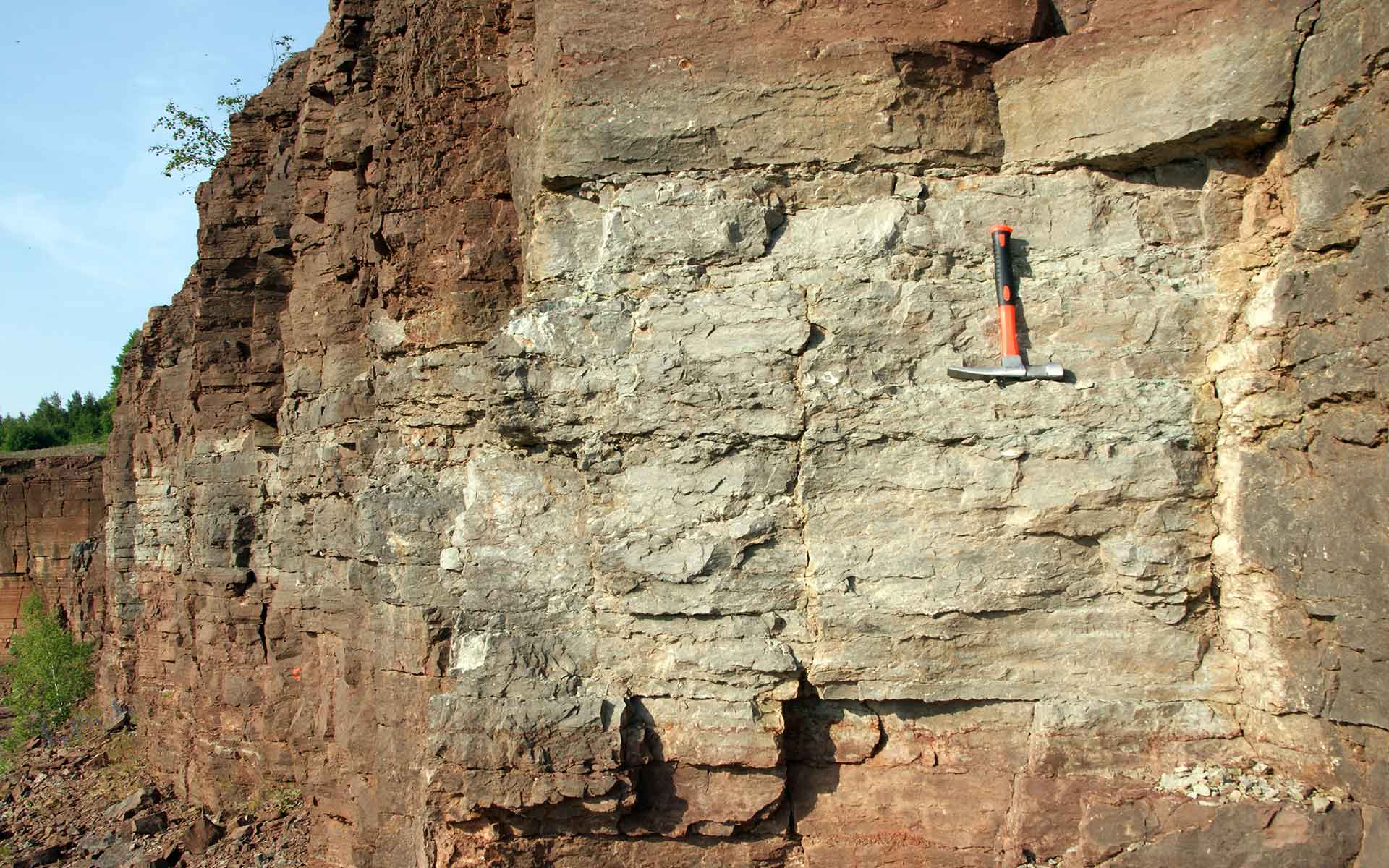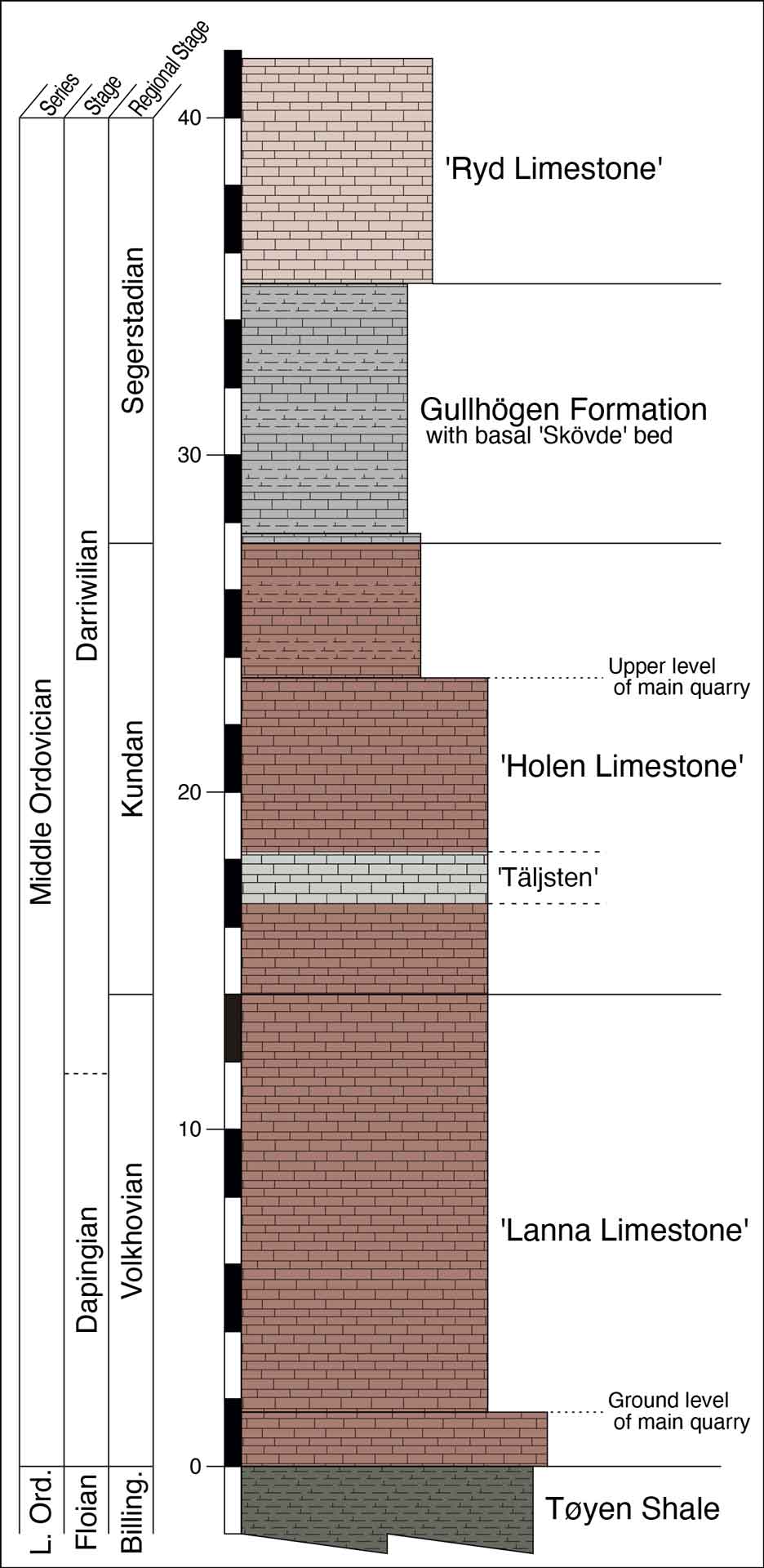
View to the north of the Hällekis Quarry. The succession is approximately 35 meters thick. (Photo: Henrik Theodorsson).
Geological Period
Lower to Middle Ordovician
Main geological interest
Stratigraphy and sedimentology
Paleontology
Location
Kinnekulle, Västergötland, Sweden
58°36’36”N, 013°23’37”E
View to the north of the Hällekis Quarry. The succession is approximately 35 meters thick. (Photo: Henrik Theodorsson).
One of the most complete, spectacular and most thoroughly documented sections of Ordovician cool to temperate water limestones, globally.
The limestone succession, spanning the Lower–Middle Ordovician boundary, is exceptionally well-exposed and easily accessible, attracting stratigraphers, sedimentologists, paleontologists and geochemists, as well as students from schools and universities. It is a prime example of carbonates formed in an extensive, sediment-starved intracratonic basin with low net depositional rates. The succession encompasses also the interval that is enriched in extra-terrestrial chromite and has yielded >130 ‘fossil’ meteorites in an active quarry 4 km to the southeast. The quarry is located within a UNESCO Geopark, protected, open as a recreational area, and visited by a large number of tourists every year.
- Geological description
Lower–Middle Ordovician bedded limestones of Sweden have been collectively referred to as the ‘orthoceratite limestone’. This world-famous cool to temperate water limestone is widely distributed in Scandinavia, and the table mountain Kinnekulle is ;regarded as its type area. The ‘orthoceratite limestone’ here has been the target of numerous focused studies and is among the most thoroughly documented intervals in the Ordovician, both regionally and globally.
The abandoned quarry at Hällekis, Kinnekulle, provides an easily accessible Middle Ordovician succession. The c. 40 m thick succession consists predominantly of ‘orthoceratite limestone’, often with corrosional hardgrounds (Lindskog and Eriksson, 2017; Lindskog et al., 2019). Macrofossils are generally relatively rare, but some beds contain abundant and spectacular accumulations of orthocone cephalopods and trilobites. Noteworthy is a grey, c. 1.5 m thick unit (the ‘Täljsten’ or ‘carving stone’) dominated by in situ preserved specimens of cystoid echinoderms. This interval contains relatively abundant chromite grains with chemical compositions that indicate a meteoritic origin. Together with the remarkable occurrence of more than one hundred macroscopic ‘fossil’ meteorites from the same interval in the Thorsberg quarry to the southeast, this has been linked to an asteroid disruption event in space (Schmitz and Häggström, 2006; Schmitz et al., 2019).
- Scientific research and tradition
The ‘orthoceratite limestone’ has been extensively studied since the mid 1800s. The last three decades have witnessed major efforts to increase our knowledge of the stratigraphy, sedimentology, paleontology, and geochemistry of this limestone interval, and the Hällekis section is significant in understanding the Ordovician world (Streng et al., 2023).
- Reference
Lindskog, A. et al. (2019) ‘Lower–Middle Ordovician carbon and oxygen isotope chemostratigraphy at Hällekis, Sweden: implications for regional to global correlation and palaeoenvironmental development’, Lethaia, 52(2), pp. 204–219. Available at: https://doi.org/10.1111/let.12307.
Lindskog, A. and Eriksson, M.E. (2017) ‘Megascopic processes reflected in the microscopic realm: sedimentary and biotic dynamics of the Middle Ordovician “orthoceratite limestone” at Kinnekulle, Sweden’, GFF, 139(3), pp. 163–183. Available at: https://doi.org/10.1080/11035897.2017.1291538.
Schmitz, B. et al. (2019) ‘An extraterrestrial trigger for the mid-Ordovician ice age: Dust from the breakup of the L-chondrite parent body’, Science Advances, 5(9), p. eaax4184. Available at: https://doi.org/10.1126/sciadv.aax4184.
Schmitz, B. and Häggström, T. (2006) ‘Extraterrestrial chromite in Middle Ordovician marine limestone at Kinnekulle, southern Sweden—Traces of a major asteroid breakup event’, Meteoritics & Planetary Science, 41(3), pp. 455–466. Available at: https://doi.org/10.1111/j.1945-5100.2006.tb00473.x.
Streng, M. et al. (2023) The Ordovician of Västergötland and Dalarna, Sweden. (Field guide for the ISOS 14 post-conference excursion. Geologiska Föreningen Specialpublikation, 3).
- Author(s)
Per Ahlberg.
Lund University, Sweden.
David A.T. Harper.
Department of Earth Sciences, Durham University, Durham, UK.
Lars Holmer.
Uppsala University, Sweden.
Anders Lindskog.
Lund University, Sweden.
Birger Schmitz.
Lund University, Sweden.


